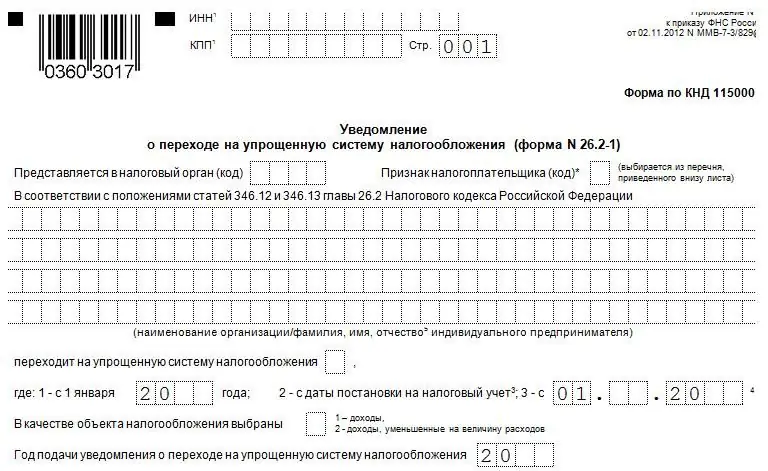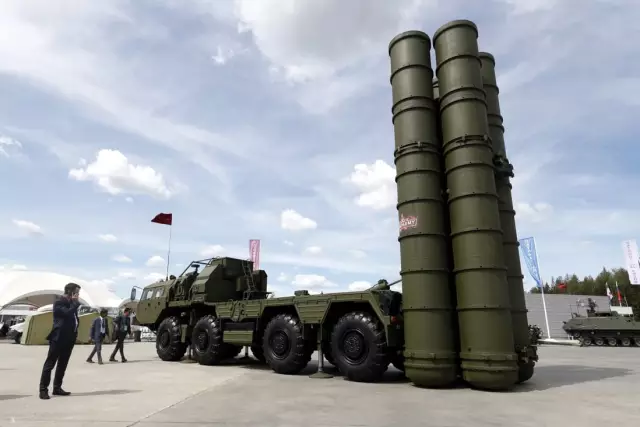2026 Author: Howard Calhoun | [email protected]. Last modified: 2025-01-24 13:10:37
Many modern Russian enterprises are actively implementing structured cabling systems as an element of digital infrastructure modernization. SCS is considered by business participants as a tool to improve the efficiency of production processes and the profitability of the enterprise. What are the specifics of such infrastructure solutions?
Term Definition
What is Structured Cabling System (SCS)? Under this term, modern IT-specialists understand the format of the organization of the technological infrastructure of a corporation, which involves the integration into a single system of information services provided for in various parts of the production process in the company.

It can be local computer networks, telephone lines, security systems. A structured cabling system (SCS) in a modern enterprise is often considered, as we noted above, as the most important factor in production efficiency and business competitiveness.
SCS specifics
The main feature of SCS ishierarchical structure of its subsystems. It may contain cables for various purposes, made of different materials - coaxial, copper, fiber optic, etc. Also in the structure of the SCS there may be various auxiliary components - sockets, sockets, connectors. One way or another, they are all part of a single system.
What might a typical structured cabling system look like? A photo of one of the modules of the corresponding large-scale solution is presented below.

We see that SCS can support a variety of cable types.
Cabling Standards
We learned about the specifics of SCS, what it is. Let us now consider some aspects related to the practical implementation of structured cabling systems in the technological infrastructure of Russian companies. Now 3 basic standards are widespread, in accordance with which the principles of combining digital resources in SCS at enterprises are determined:
- EIA/TIA (popular in USA);
- CENELEC EN 50173 (common in Europe);
- ISO/IEC IS 11801 (characterized by worldwide demand).

Another criterion for the standardization of structured cabling systems is the bandwidth characteristics of digital communication lines. There are 7 main categories of cables, each of which is designed to solve specific problems. So, for example, category 1 is used when lining uptelephone lines. Category 5, 6 and 7 cables are used for high speed data exchange.
Depending on one or another standard, on the basis of which the structured cabling system functions, technologies and devices that are optimal for solving specific problems are used. For example, with the spread of fiber optic data transmission standards in many enterprises, it became necessary to upgrade the corresponding network equipment. If it is not produced, then the competitiveness of the business may be significantly reduced.
Standardization is the most important factor in the functionality of structured cabling systems. Building the technological infrastructure at the enterprise in accordance with the algorithms approved at the level of a certain industry or in international standards predetermines ample opportunities for subsequent modular modernization of SCS components.
Certification
Another aspect that is important for many enterprises setting the task of building a structured cabling system is certification. In principle, it can be considered in the general context with standardization. It complements it in terms of formally assigning criteria for the compliance of the digital infrastructure with certain standards to the enterprise.
A structured cabling system that has the appropriate certification, as a rule, is characterized by increased reliability, as well as greater opportunities for upgrading individual infrastructure components. It can be noted that many brands producing networkequipment provide a guarantee only if the SCS is certified in the prescribed manner.
Structured criteria
Based on what criteria can one or another cable system be classified as SCS? What are these specific features that can characterize an enterprise's digital infrastructure as structured? In the practice of building cable networks of the appropriate type in Russia, the following set of criteria has developed.

First of all, a structured cabling system (SCS) is an infrastructure that, according to Russian IT specialists, is adapted to the ergonomics of industrial premises. In particular, in such an aspect as the location of the connectors.
Ordinary cable systems, not characterized as structured, suggest a simpler layout of the corresponding type of network elements, in which the main criterion is the location of employees' workplaces. In structured networks, as a rule, the density of connectors is several times higher than in conventional networks. In most cases, this predetermines a significant increase in the efficiency of the enterprise's digital infrastructure.
The next criterion, according to which this or that network is defined as a structured cabling system, is the versatility of the elements. For example, workplaces (in the event that SCS is implemented at the enterprise) can be equipped not with the only type of connectors (for example, for twisted pairs), but also with additional slots, for example,fiber optic.
Another aspect of versatility is the uniformity of cable types used in the installation of different sections of the SCS. This facilitates the possible replacement of relevant components, optimizes the costs that can accompany the installation of such a complex infrastructure as a structured cabling system (SCS). Accounting at many enterprises shows that building SCS is accompanied by significant costs, and therefore the design of appropriate networks must be efficient, with an emphasis on the fastest return on investment.
Another important criterion for classifying cable networks as structured is the division of their individual sections into subsystems. So, in Russian practice, a scheme for dividing subsystems into 3 types is common: those that are mounted on the floor, on the main line of the entire building, as well as those that cover the elements of a complex consisting of several structures. Such a classification predetermines the high efficiency of SCS management.
Why does an enterprise need SCS?
What is the economic feasibility of introducing such an infrastructure component as a structured cabling system? The cost estimate, as we noted above, may involve the investment of significant financial resources in building the RAS. The benefits of such investments can be seen in the following main aspects:
- Firstly, the main advantage of SCS is, as a rule, a higher speed of data exchange between computers of employees of the enterprise. This is achieved through the optimal use of cables of appropriateclasses, as well as through effective schemes for their placement in specific areas of buildings.
- Secondly, structured cabling in most cases predetermines a more secure communication in the enterprise. As a rule, SCSs include various integrated protection mechanisms against external intrusions into the corporate network, access control tools - both hardware and software.
- Thirdly, the use of structured cabling allows increasing the mobility of workplaces in the company. Universality as one of the criteria for classifying a particular digital infrastructure as an SCS implies that employees, regardless of specific positions, have the same access to the organization's network resources. It does not matter in which specific room a person works - he can connect to the corporate network at any time.
Structured building cabling is in most cases easier to repair than traditional network infrastructure arrangements. So, to replace one or another cable, there is no need to dismantle large sections on which communication lines are laid. The individual components of the infrastructure that make up the SCS are usually not too large, and besides, they are designed taking into account the possible replacement in advance.
SCNs scale much more easily than traditional networks. The modularity of the schemes involved in the design of structured cabling systems implies that at any time additionalcomputers.

In the aggregate, all the noted advantages of SCS allow us to talk about increasing the efficiency of an enterprise's costs in terms of building digital networks. This can be seen both in terms of the purchase of the necessary materials, and in terms of remuneration of specialists who control the work of structured cabling systems.
It can be concluded that it is economically feasible to build SCS, that this is a tool to increase the profitability of an enterprise. Of course, it will work in practice with the appropriate quality of the installation of cable systems and on the condition that highly qualified specialists will work with it.
Prospects
Will SCS be in sufficient demand on the Russian market? What is it - a temporary trend or a promising standard of the IT industry, compliance with which will become the most important factor in the competitiveness of a business? According to modern IT experts, Russian enterprises are showing a strong interest in equipping their respective production sites with high-performance digital infrastructure components. Structured cabling systems are fully capable of meeting these business needs, therefore their implementation is characterized by growing dynamics in many sectors of the Russian economy.

Specialists note that the interest of enterprises in building SCS as a key element of the company's digital infrastructurecan be traced not only in the largest Russian cities, but also in remote regions. This may indicate that firms, despite the high cost of solving the problems of building SCS, see such systems as an effective tool to improve business efficiency. One can note a rather high degree of awareness of enterprise management about the benefits of SCS. Large business leaders are usually very familiar with the essence of such a powerful solution as a structured cabling system, what it is - they quite understand.
Fiber technologies as a demand factor for SCS
A significant driver of the growth of the SCS market, experts call the dynamic pace of the spread of fiber optic technologies. This communication standard has the potential to become a factor in a significant increase in the efficiency of enterprises. This will be facilitated, first of all, by the very high data transfer rate provided by fiber optics (several times higher than when using channels of previous generations).
If some time ago many people doubted whether or not to introduce fiber optic lines (after all, the cost of building the appropriate infrastructure is much higher than when laying traditional channels), now the enthusiasm for a new high-tech communication standard is becoming a steady trend among Russian enterprises. The corresponding dynamics is supported by the development of technologies for the installation of fiber optic networks (in favor of cheaper solutions), as well as the improvement and reduction in the price of equipment requiredto build communication channels.
Accounting nuances
The fact is that OKOF (the all-Russian classifier of fixed assets) does not include such an element as a structured cable system. This is not a problem if we refer to the corresponding type of infrastructure, for example, to ordinary local networks. But, as we have defined above, there can be a significant difference between them and SCS. According to some experts, it will not be a legal mistake to classify SCSs as ordinary LANs when implementing accounting procedures. In addition, there are several approaches to accounting for structured cabling systems - as separate objects and as elements of the building structure. Both options are legally correct.

SCS and smart buildings
The smart building concept is another possible stimulus for further adoption of solutions such as structured cabling. What it is? "Smart building" is a collective name for technologies that involve the introduction of various digital components into the elements of corporate premises, and in some cases residential buildings, which can significantly increase the comfort of people being in them. In the case of corporations - to increase the efficiency of the consumption of certain resources, such as electricity.
Smart building components can be, for example,air conditioners, video cameras, access control systems operating under the control of automated software algorithms at various production sites. The effectiveness of the concept under consideration directly depends on whether the company has a high-quality digital infrastructure at its disposal. In the case of using SCS, the corresponding criterion will be fully observed, and all the developments of IT specialists in the direction of the concept of "smart building" can be implemented at the optimal cost of the enterprise.
Recommended:
Using the simplified tax system: system features, application procedure

This article explores the characteristics of the most popular taxation system - simplified. The advantages and disadvantages of the system, conditions of application, transition and cancellation are presented. Different rates are considered for different objects of taxation
Staffing of the personnel management system. Information, technical and legal support of the personnel management system

Since each company determines the number of employees independently, deciding what requirements for personnel it needs and what qualifications it should have, there is no exact and clear calculation
Centralized management: system, structure and functions. Principles of the management model, pros and cons of the system

Which management model is better - centralized or decentralized? If someone in response points to one of them, he is poorly versed in management. Because there are no bad and good models in management. It all depends on the context and its competent analysis, which allows you to choose the best way to manage the company here and now. Centralized management is a great example of this
Structured notes: definition, features and description

This article is about structured notes. Attention is also paid to the principles of operation and the degree of reliability of this product
Anti-aircraft missile system. Anti-aircraft missile system "Igla". Anti-aircraft missile system "Osa"

The need to create specialized anti-aircraft missile systems was ripe during the Second World War, but scientists and gunsmiths from different countries began to approach the issue in detail only in the 50s. The fact is that until then there simply were no means of controlling interceptor missiles

